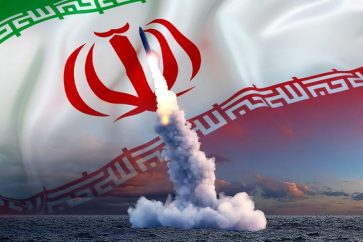Sirens sounded across central Zionist entity overnight Friday as Iran claimed responsibility for launching a barrage of missiles targeting what it described as “Greater Tel Aviv.” Israeli media reported that at least ten ballistic missiles were fired, with one reportedly striking a building in Holon, a city south of Tel Aviv.
Iran conducted new missile strikes on occupied Palestine.
Follow: https://t.co/mLGcUTS2ei pic.twitter.com/mCm5CFIao3
— Press TV 🔻 (@PressTV) June 21, 2025
Israeli emergency teams continue to try to control the fire, amid official secrecy surrounding the extent of the damage and potential human losses.
▶️ New footage shows the Iranian Army launching several Arash-1 and Arash-2 drones toward targets in the Israeli-occupied territories.
Follow: https://t.co/mLGcUTS2ei pic.twitter.com/VJBbmDIQ8L
— Press TV 🔻 (@PressTV) June 21, 2025
Air raid sirens sounded across large areas of occupied Palestine, extending from Netanya in the north to Ashdod in the south, as well as Tel Aviv in the center, amidst a state of panic among settlers, who were asked to remain in shelters.
Israel’s Channel 12 reported that one of the rockets landed on a building in Greater Tel Aviv, specifically in the city of Holon, south of Tel Aviv, causing a major fire at the site.
Emergency teams continue to try to control the fire, amid official secrecy surrounding the extent of the damage and potential casualties.
Large fire broke out in Tel Aviv after fresh Iranian missile strike on Israel
Follow: https://t.co/mLGcUTS2ei pic.twitter.com/zTKtwMTHWB
— Press TV 🔻 (@PressTV) June 21, 2025
Red-raid sirens sounded across large areas of occupied Palestine, extending from Netanya in the north to Ashdod in the south, including Tel Aviv, amidst panic among settlers, who were asked to remain in shelters.
For its part, the Islamic Revolutionary Guard Corps in Iran announced the implementation of the eighteenth wave of Operation True Promise 3 against Israeli military targets in central occupied Palestine, using a large-scale attack using Shahed 136 drones and precision missiles. The Revolutionary Guards confirmed that the operation had successfully achieved its objectives, and that operations would continue in a continuous and purposeful manner.
In a statement issued on Saturday, the Revolutionary Guards announced that the 18th wave of Operation True Promise 3 had been launched against military targets and operational support centers of the Zionist entity’s army in central occupied Palestine, including Ben Gurion Airport.
The Revolutionary Guards explained that the operation was carried out through an intensive attack using Shahed 136 suicide and fighter drones, as well as solid- and liquid-fuel precision-guided missiles. The pre-determined targets were successfully destroyed, by God’s grace and power.
It is worth noting that several squadrons of Shahed 136 drones carried out their missions continuously in the airspace of the occupied territories that night, while the most advanced air defense systems were unable to intercept them, and the Zionists were forced, as usual, to flee to shelters, according to the statement.
The Revolutionary Guards statement confirmed that the combined operations using missiles and drones will continue in a continuous and purposeful manner.
The Military Importance of Targeting Holon
Due to its location south of Tel Aviv, the city of Holon includes a number of vital sites that could be considered potential Iranian targets. Near Holon’s border with Bat Yam and Tel Aviv, there are factories and warehouses belonging to the Israel Aerospace Industries (IAI) and facilities related to defense research, some of which are located within a closed security zone.
In addition, there are police field headquarters and technological control centers that manage the infrastructure of Greater Tel Aviv.
The city also houses the Technological Institute, an advanced education center in information technology, which is sometimes used in joint projects with the Israeli military and the defense industry.
Holon is also located within Tel Aviv’s major infrastructure network (the Dan electricity grid and the Gush Dan water network), and targeting these networks could disrupt large parts of the central region.
Source: Agencies (edited and translated by Al-Manar English Website)



